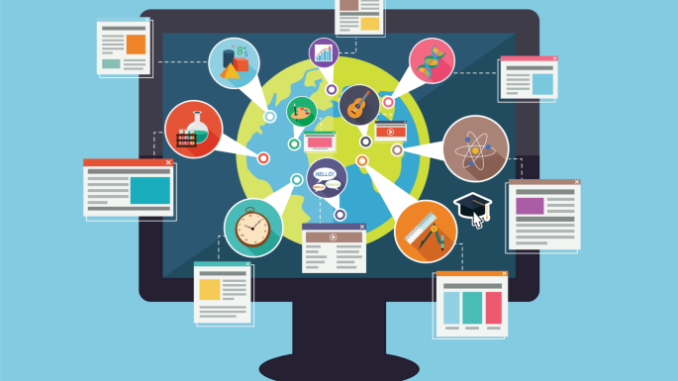
In recent years, online learning has seen a dramatic evolution. Advancing technology, changing educational needs, and global events like the COVID-19 pandemic have driven this change. What was once niche has become mainstream now and it’s reshaping the future of learning wherever you look. From virtual classrooms to digital resources, this article looks at what’s new in online education and where we can expect things to go next in the field.
New Ways to Learn Online: Virtual Classrooms Overturn Old Notions
Offering interactive, immersive learning environments unconstrained by geography, virtual classrooms are a major change from traditional educational methods. Using video conferencing, real-time collaborative software tools and multimedia materials like video clips, digital worlds have made the traditional form of broadcasting lectures younger. Students are able to attend live lectures, interact with classmates in discussion groups on-line, or download recordings for subsequent all-night study sessions wherever they have an Internet connection. Virtual classrooms encourage flexibility in timetables, individualized learning paths and more equal provision of education for students from all backgrounds.
Digital Resources: Knowledge At Your Fingertips
The rise of digital resources has made knowledge freely accessible to all. Learners can study in a great variety of subjects and formats with e-books, online courses and demonstrations, educational apps and so on. Both open educational resources (the OERes) and massive open online courses (mMOOCs) are cheap or even free alternatives to traditional university textbooks the world over, making learning more affordable for everyone regardless of countries or regions they live in fact enabling communities where it might not previously have been possible.
Adaptive Learning Technologies: Customized Education
Adaptive learning systems, powered by artificial intelligence and big data analysis, are making educational experiences more tailored to individual learning needs and styles. Just as mobile phones with their “smart” functions are replacing the clock radio alarm as more people’s preferred way to wake up in the morning, this latest software adaptation routes feedback courses and even tests according not only where students ‘are’ but also what they ‘need.’ Pooling students skills whilst at same time addressing the issues they face, adaptive learning technologies improve students ‘commitment to the course and help more of them to keep on learning at second grade levels.
Gamification and interactive learning: capturing the digital generation
Game design principles, both in game mechanics and narrative design, are used to enhance engagement, motivation and learning outcomes for users. Whether as educational games or simulations, it makes learning into an enjoyable and immersive experience where progress tracking fosters active participation (or even passive observation at times). Learning sites like online college and MOOC real-time marketing curriculum has been based on gamified models for several years To most effectively engage the ‘digital native’ student with critical thinking skills.
Microlearning and bite-sized content: meeting learners’ needs
Microlearning, by condensing the content of a course into small chunks known as “microlessons,” caters to learners’ busy lives and short attention spans. This approach breaks down complex topics into tiny, easily understood snippets that allow the student to focus on one thing at a time. When combined with the learning platforms that exist today (such as CIM-LRS, e-learning blogs), content for micro-lessons can be delivered in many forms including videos, text and graphics. Learners can choose when and where to learn their subjects based on their own needs using these materials. When it comes to micro-learning information-based program suites are very popular among customers and client companies on both a Harlan-and Hollywood terraces; other contrasts in markets reflect their use or not at such websites as The Wealth Network.
Remote Education and Blended Learning: Rethinking Education Models
New forms of distance learning and blended learning have driven the integration of online and physical classroom experiences. Blended learning packages traditional classroom instruction with online components, bringing the best of both worlds into a hybrid learning environment. This gives more flexibility, enables personalized learning paths for students and incorporates digital tools and resources directly into the curriculum. Remote education, thanks to virtual classrooms and digital platforms, has likewise opened up opportunities for lifelong learning and global collaboration through distant interaction without leaving your doorstep.
Challenges and Considerations
Although online learning presents its share of advantages and opportunities, it also brings headaches for educators, institutions and learners. These challenges include digital equality and access, quality and rigour of courses of study produced in this medium, concerns about “screen time” (the amount of hours spent looking at screens) and digital distractions which can interrupt a student’s concentration on their work. In addition, how to create a feeling of belonging as well as interaction in virtual environments has yet been straightened out. Therefore, teachers have to adapt pedagogical approaches, institutions tailor learning experiences, technological know-how must be handled well and people need to acquire digital literacy. Such a combination can help free up the potential of online learning with maximum effect from all levels of society.
Conclusion: Embracing a Transformative Future
The future of online learning holds out great hope for making education a thousand times better and giving young people from remote parts of the world access to knowledge that they could get nowhere else. Virtual classrooms, digital resources, adaptive technologies and innovative learning modes are changing today’s teaching and learning completely. By riding this trend, promoting collaboration and innovation, and tackling problems in advance, we can fashion a world where education is ever more inclusive for people of all ages and backgrounds is more enjoyable than ever before. As we have just said Earth right now scarcely had enough room even at the middle income level for the promised two or three billion people.